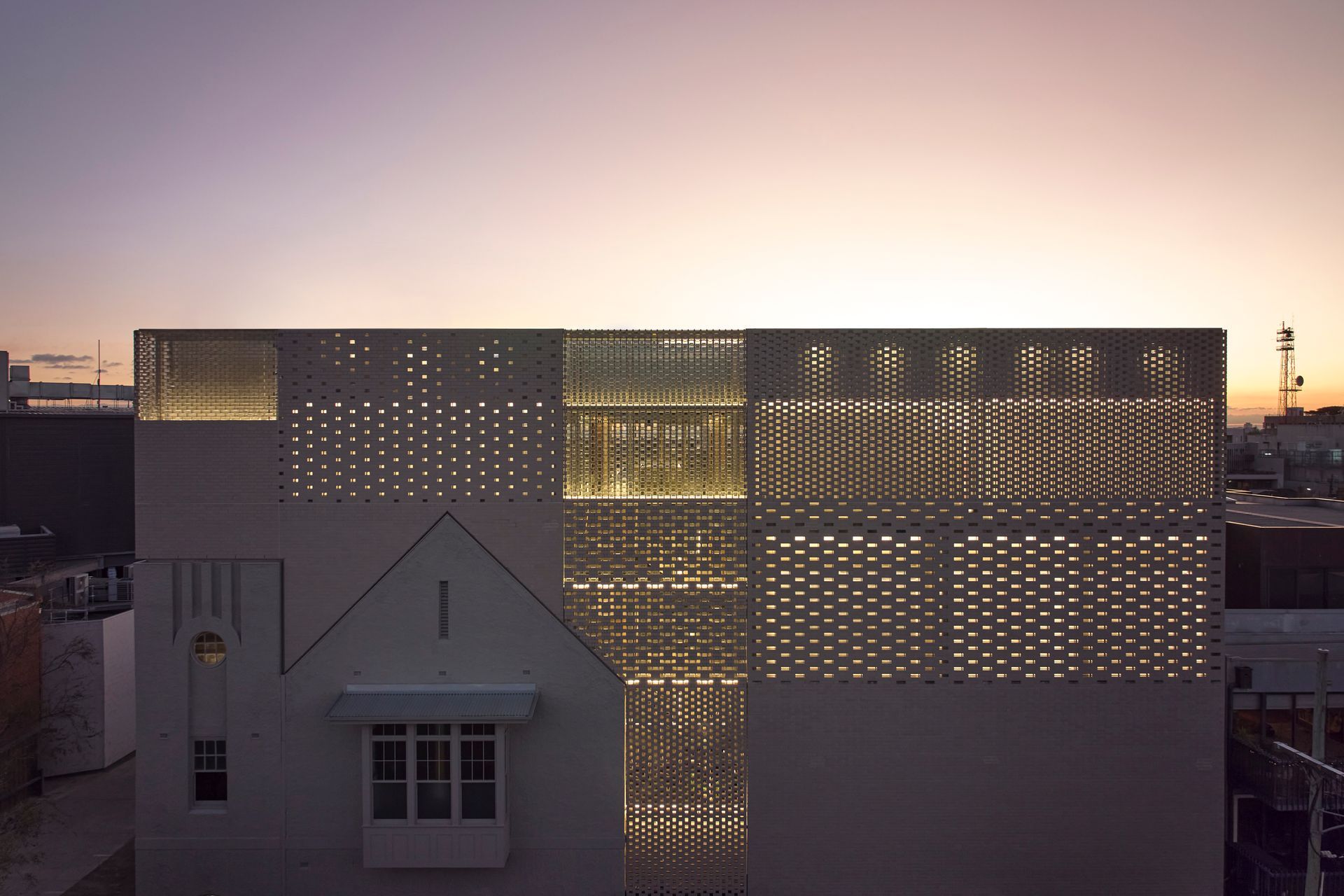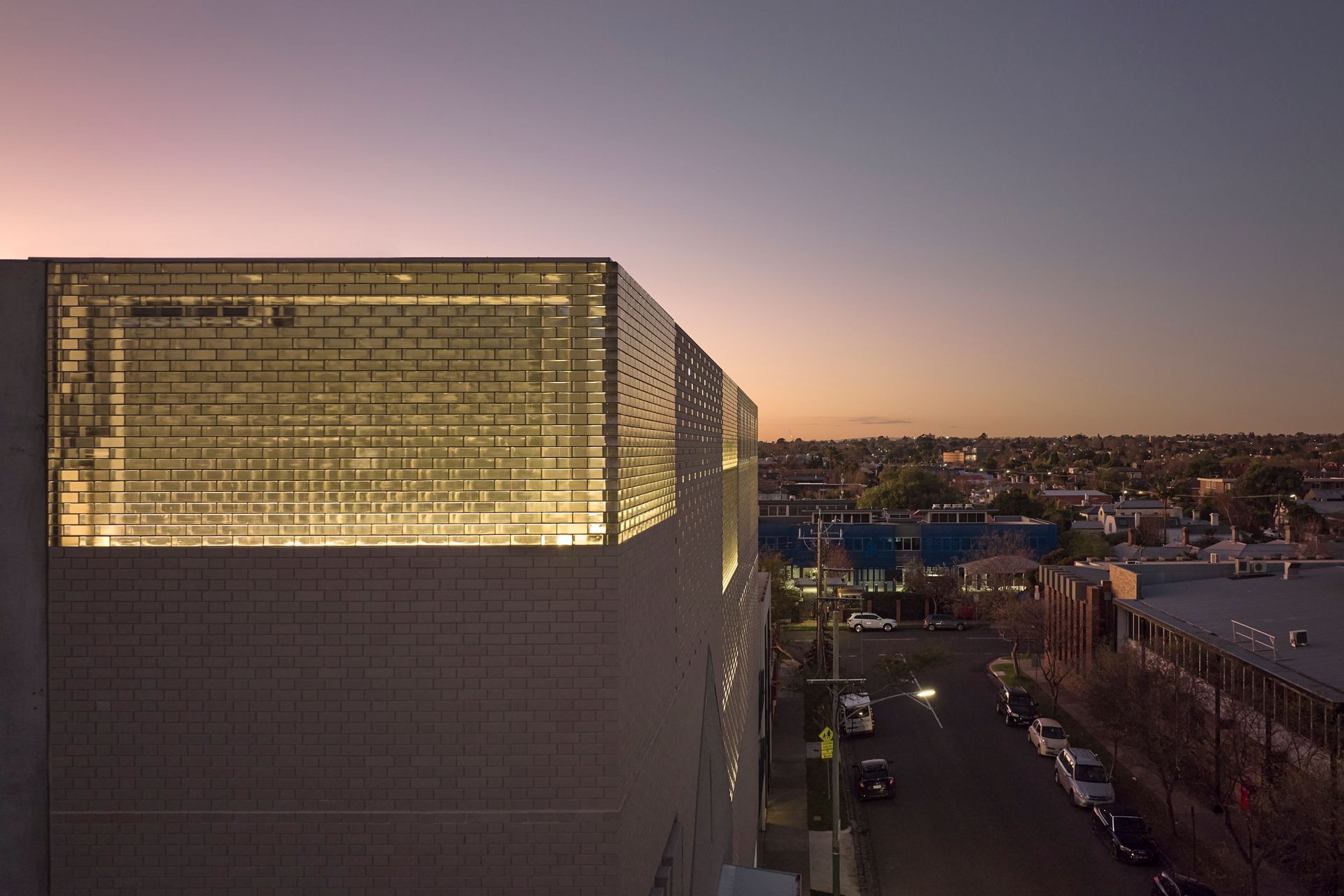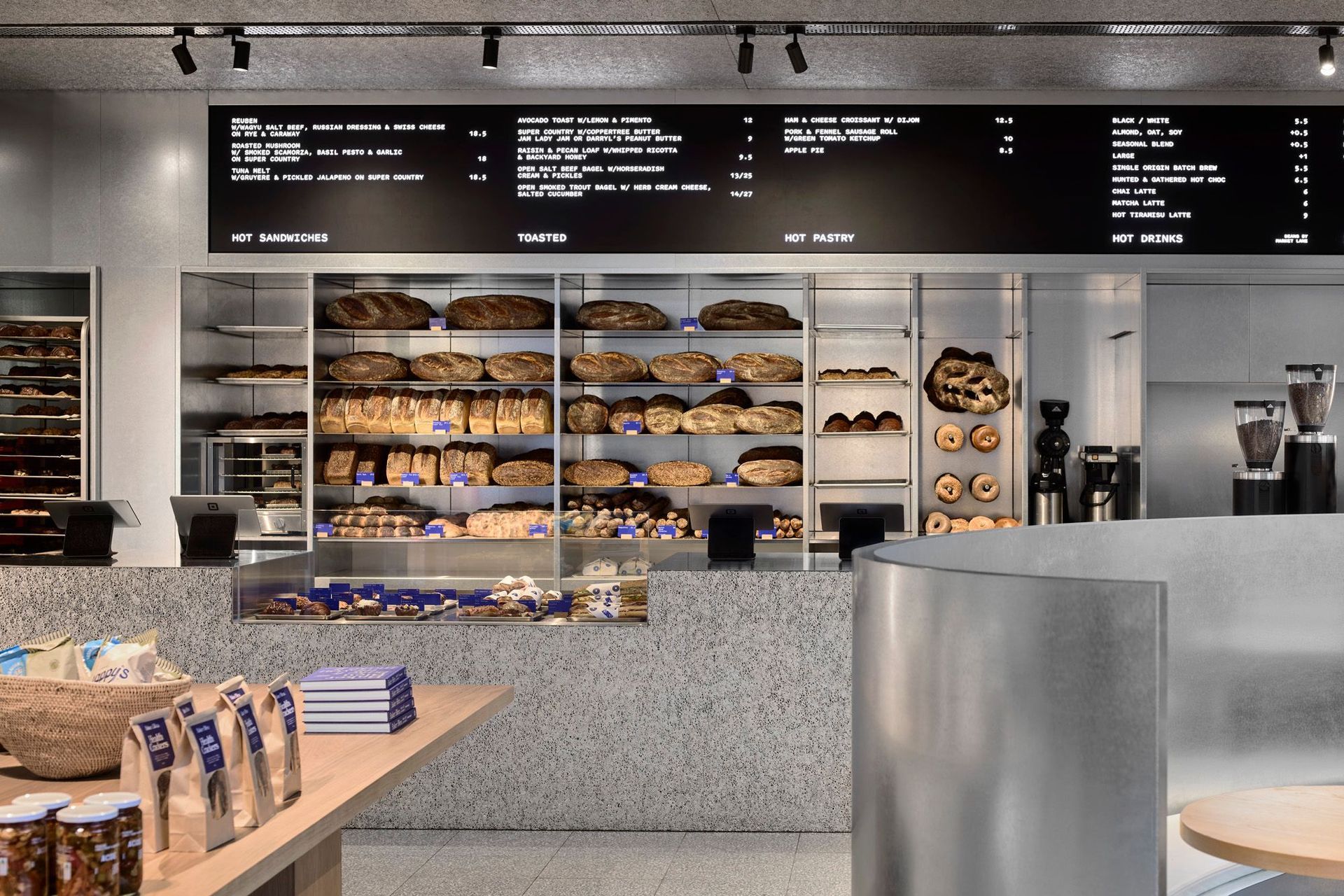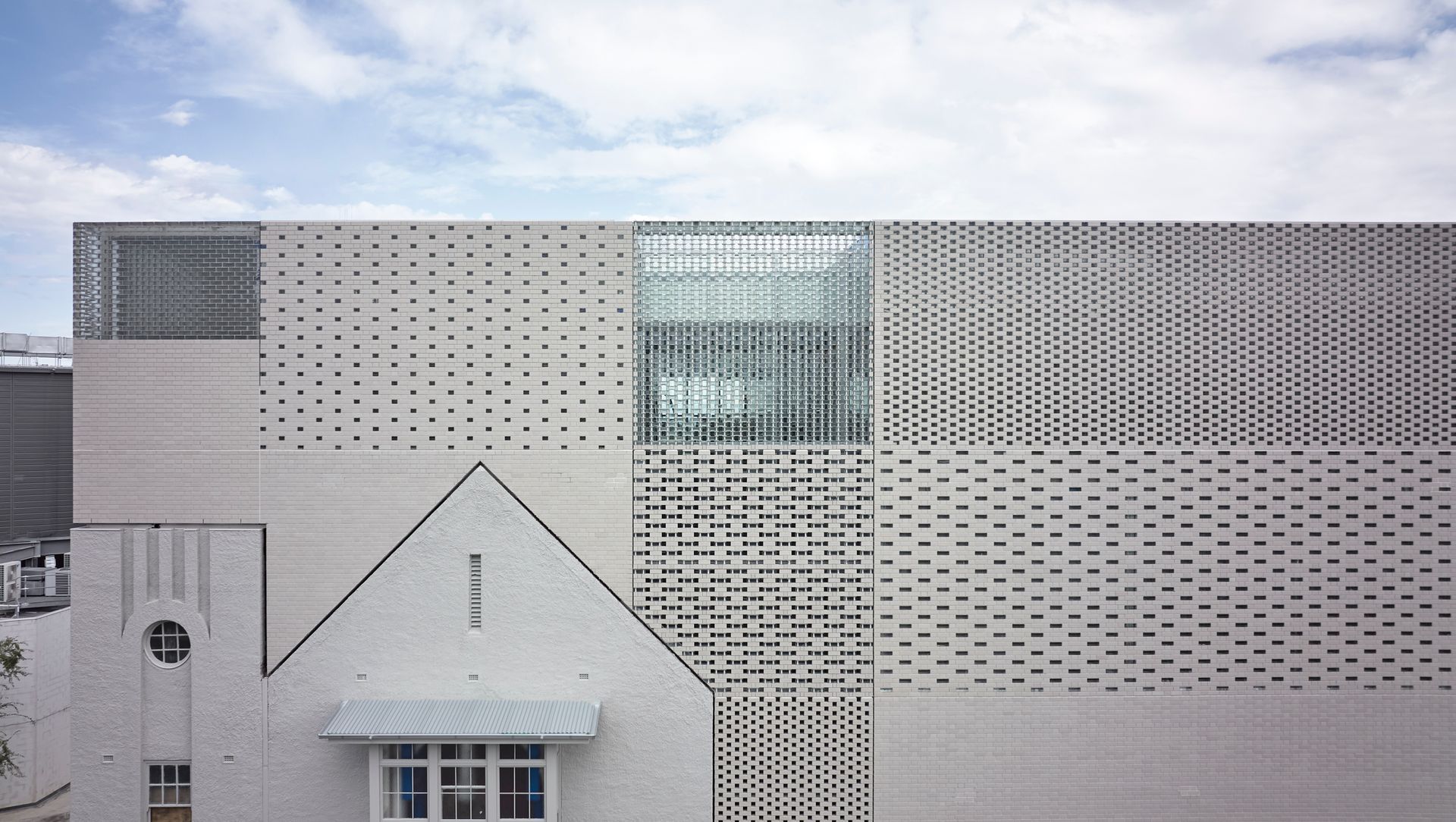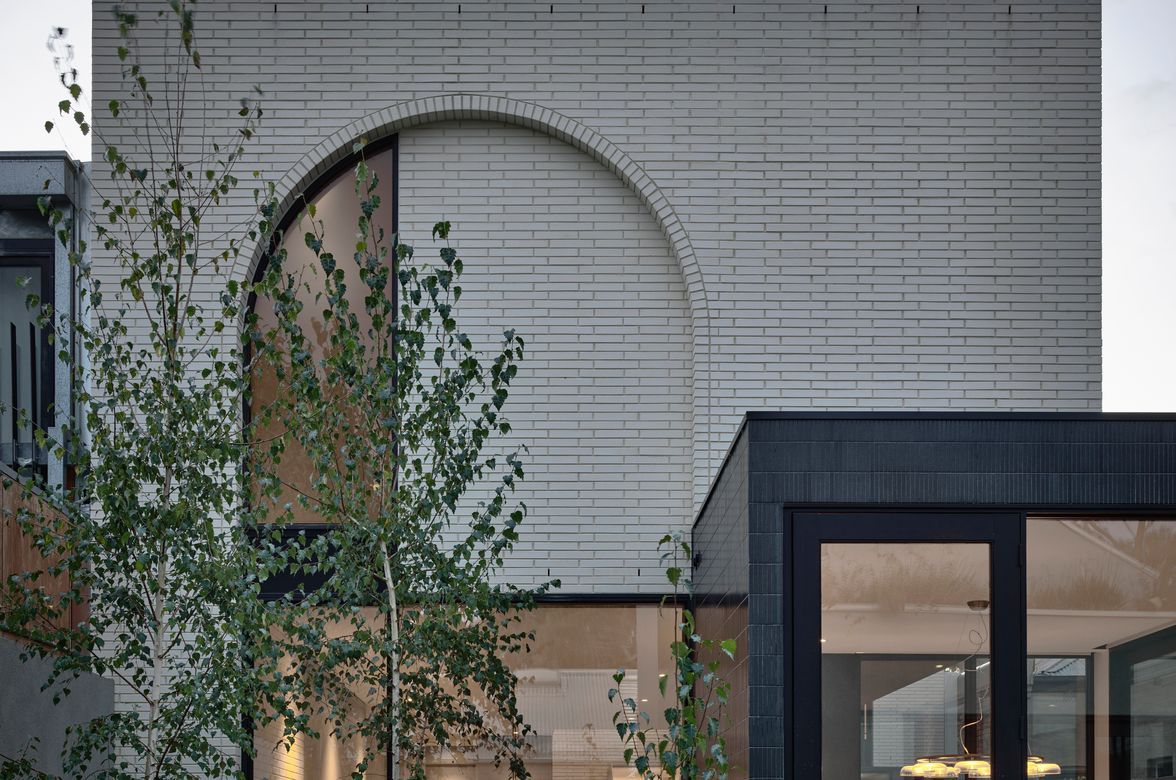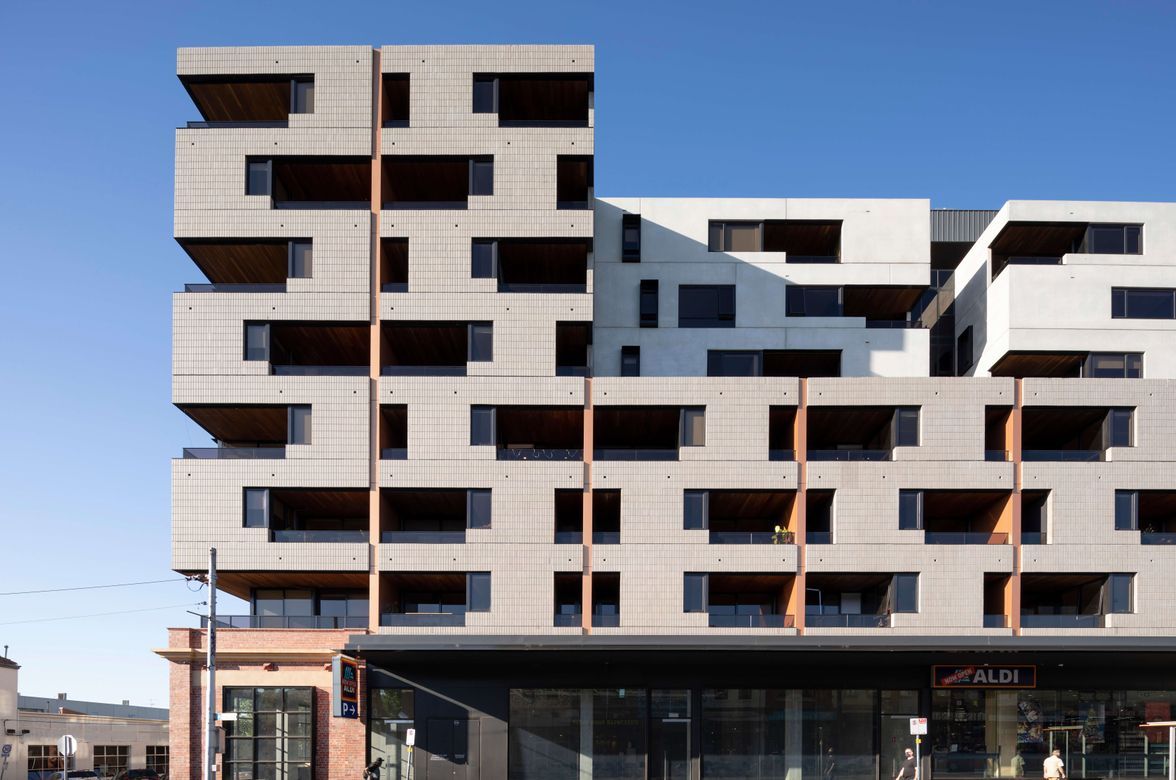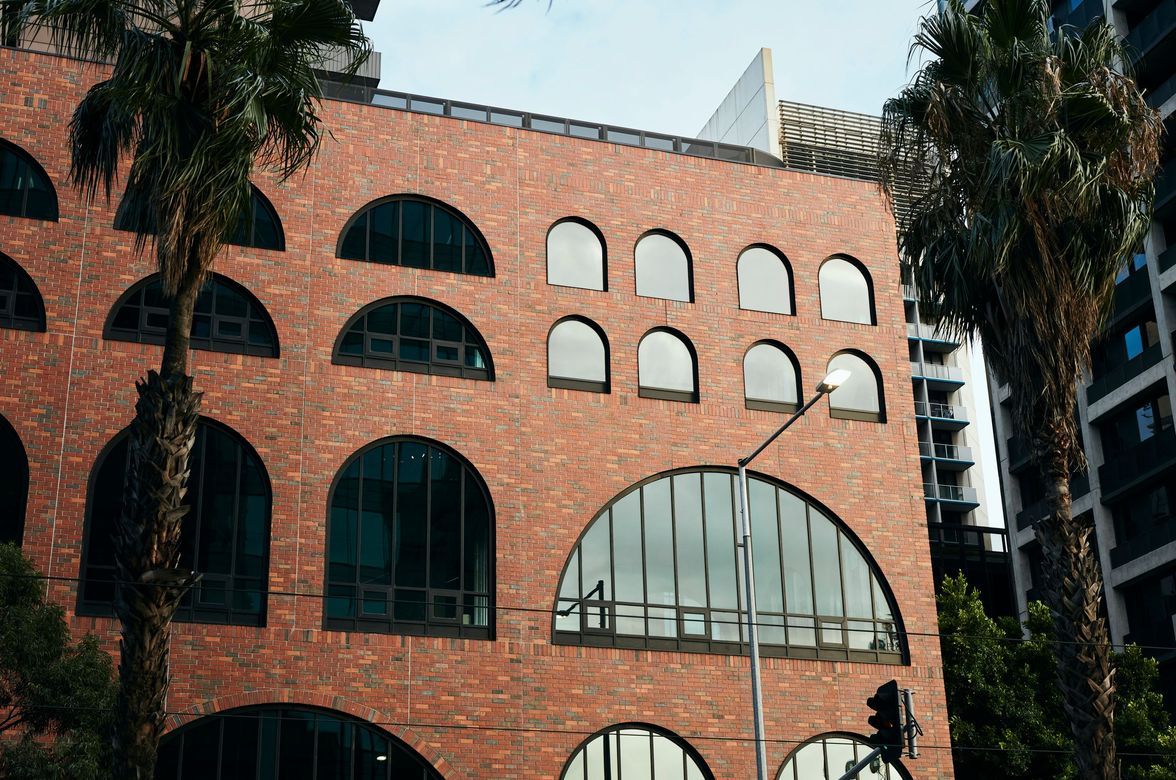Poesia glass bricks help to celebrate life inside the Melbourne Holocaust Museum
Secure, yet overwhelmingly welcoming, with a strong focus on light and life against the shadow of the Holocaust. The new addition to the Melbourne Holocaust Museum – Australia’s largest institution dedicated to Holocaust education, research and remembrance – will build a long-term legacy for Melbourne’s survivor community.
Thoughtfully designed by Kerstin Thompson Architects (KTA), this incredibly moving space combines museum research, education and administration functions in a new facility. Importantly, the original heritage building on the south-east corner has been retained and seamlessly integrated within the new façade.
The distinctive corner turret of the heritage building is a strong, defining feature of the streetscape, while inside, its significance is reinforced by its transformation and extension into a three-storey lightwell surmounted by a glass brick wall. It’s this magnificent wall that illuminates the memorial space – the symbolic heart of the museum – where lives lost during the Holocaust are remembered.
Importantly, by materially integrating the old building with the new façade, and treating it like an important museum artifact, the Melbourne Holocaust Museum’s role as a cultural repository is reinforced. The early building bears the cultural memory of the centre’s beginnings and forms the cornerstone of the museum’s future journey. Immensely fitting given that inspiring a better future through education, one free of racism and anti-Semitism, and one based on empathy, compassion, tolerance and respect is at the heart of the museum’s mission.
Balancing security with openness
This seamless integration of old with new, and the building’s perfect balance between security and openness, sets this design apart.
In complete contrast to the typical bunker-like forms taken by most international Holocaust museums, the team at KTA wanted to do something completely different:
“Holocaust museums are notoriously closed buildings, often configured as bunkers because of their security risk profile. Instead, the architecture for the museum balances the desire for security with openness … So the transformation will dramatically change from the building’s earlier interface with the street to become secure and welcoming,” Kerstin comments.
More, importantly, the team wanted an emphasis on humanity:
“Most Holocaust museums tend to be cold and intense spaces, and that’s not what we went for. We wanted a more domestic feel to offer a sense of relief and consolation in contrast to the horror of the Holocaust,” adds Anne-Claire Deville, project lead, KTA.
The façade design clearly reflects this intent.
While wanting to create a protective envelope, the team also sought transparency through a variegated façade to establish a visual connection between the street and the museum’s interior. This is achieved using a combination of light clay bricks and solid, clear Poesia glass bricks, used in a hit and miss pattern and in solid sections of either clay or glass bricks.
“The change of transparent and solid, which we get in the façade, is a way in which we enable some of the life in the building to become evident from outside on the street .. and at night, glowing from within, the Melbourne Holocaust Museum will act as a beacon, to celebrate the life inside,” says Kerstin.
The use of Poesia Glass bricks draws a link to crystal art, and recognises the beginning of the Holocaust in reference to the November 1938 Pogrom, which became known as the ‘Night of Broken Glass’. It also hints at Melbourne’s relative freedom, in 2022, to express and celebrate cultural identities with reasonable safety in a building that physically connects to the public realm using transparency and glass; the once solid doorway on the heritage façade replaced with a glazed infill.
A world-first hit and miss façade of glass bricks
The façade is a work of art; a labour of love that reaped rewards. It’s the first time a hit and miss façade has been created with glass bricks, which was more challenging given the mix of clay and glass, as these materials react differently to the elements.
The façade design was heavily documented, shop drawn and engineered, and the entire façade was modelled brick by brick in 3D by KTA to resolve the façade perfectly. Given the important purpose of the project, and in getting the technical and aesthetic aspects just right, the creation of the glass façade was supported by the experience and product knowledge of Pietro Guarino of Poesia.
Poesia created custom bricks for the hit and miss façade to accommodate holes for rods to go through to hold them together. And, to keep the entire structure in place, the façade engineers of Inhabit Group developed a custom façade system.
McCorkell Constructions then built and tested a prototype to address the question of tolerance, to enable Inhabit and KTA to finalise the drawings.
“Being in direct contact with Pietro Guarino at Poesia was very helpful. They have a lot of technical knowledge because they’ve done a lot of challenging projects, and the builder used Poesia because of Pietro’s great business sense, and the way he pushed to achieve what others couldn’t do; his technical advice and support was very valuable,” Anne-Claire remarks.
On top of it all, this was all happening in 2020 during lockdown:
“Despite how hard Italy was hit by Covid, they were still producing glass bricks. And although there were delivery delays, experienced by the whole industry, Poesia’s factory really worked hard to alleviate the impact of Covid, it was quite impressive,” Anne-Claire adds.
Emphasising humanity over horror
Inside a warm, soft colour palette brings a sense of humanity into the design at every touch point, predominantly timber and pale grey brick.
The real magic happens behind the hit and miss wall of clay and Poesia glass bricks. A raised memorial garden, or Birch Forest, sitting quietly against the façade, referencing the birch forests of Poland and Germany where the concentration camps were located. A subtle reflection of how nature sat as the silent witness of the horror nearby.
“They’re really important symbols, so we planted birch trees in the raised garden, with the stair void in front of that. The dappled light going through the hit and miss, the trees, and the stairs, results in a beautiful and reflective space,” Anne-Claire comments.
The new centre includes a permanent Holocaust museum, a dedicated museum space for younger visitors, a gallery for temporary exhibitions, a contemplative garden, two auditoriums and a memorial room. But, the Melbourne Holocaust Museum does more than store facts and memories about the Holocaust. As CEO Jayne Josem says, “We’re not just building a museum, we’re building tolerance, we’re building respect, we’re building understanding.”
KTA hopes that having such a distinctive building will attract more visitors to use the new facility and help to continue the legacy of the survivors.
“We’re proud to have designed and delivered such a unique project. The glass bricks have enhanced the spaces, creating an effect that is encouraging, reflective, and consoling. You have to strike a fine line between beauty in a space and bringing light to distressing and horrific events, so it’s a sympathetic place for respect and memory, we hope the Museum will foster this,” Anne-Claire concludes.
The Melbourne Holocaust Museum is due to re-open fully to the public in 2023, and we look forward to seeing it come to life to carry on the legacy of its founders for many years to come.
Architect: Kerstin Thompson Architects
Product: Poesia clear glass bricks
Builder: McCorkell Constructions
Façade consultant: Inhabit
Photography: Derek Swalwell
